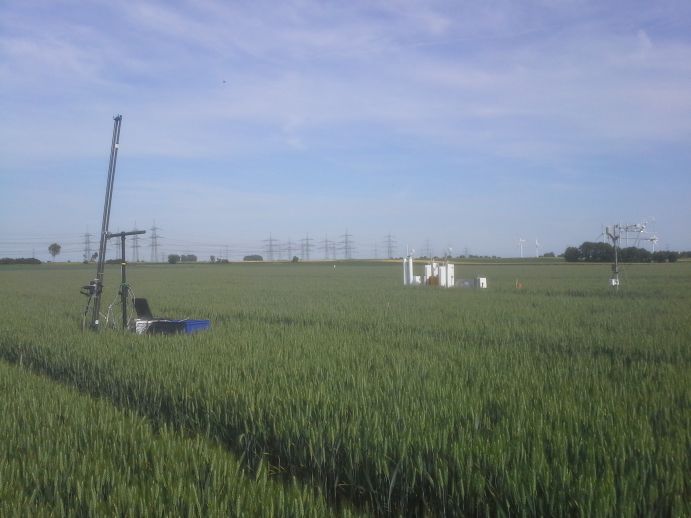IDAS-GHG - Instrumental and Data-driven Approaches to Source-Partitioning of Greenhouse Gas Fluxes
The increase in global atmospheric CO2 concentration is caused by mankind’s burning of fossil fuels. The strength of this increase, however, cannot be directly derived from our annual CO2 emissions, and so neither its effect on climate. This is due to biosphere-atmosphere-interactions: With environmental conditions changed by mankind, plants and soils change the way they absorb, store and emit carbon. For example, increased CO2 concentration acts as a fertilizer for green plants in the presence of sufficient sunlight and other resources: Through accelerated growth, they withdraw more CO2 from the atmosphere than before, a process which has slowed down net CO2 increase considerably. Other compartments of vegetation, and the soils with their content of organic carbon and microorganisms feeding on it, however, emit more CO2 in a globally warmed atmosphere due to accelerated respiration. In order to understand these changes and predict the further development of the resulting net exchange, robust and simple means are required to quantify the simultaneous photosynthesis and respiration in different parts of a single ecosystem.

Project Objectives
The project IDAS-GHG, aims at improving and facilitating the partitioning of existing greenhouse gas net exchange measurements on agricultural areas, forests and other ecosystems into different source and sink processes. Beyond CO2 exchange, this is also of interest in the context of evapotranspiration, which controls atmospheric concentrations of the greenhouse gas water vapour, and of the potent greenhouse gas nitrous oxide (N2O). Starting point of the project is a comparison between existing methods on common measurement sites. This includes amending stations with additional measurement instruments as well as testing methods for the analytical partitioning of already existing net exchange time series. Based on this, innovations of the most promising methods are tested. Finally, the improved methodology is used to assess the robustness of land use adaptations to climate change and their potential to mitigate this same climate change. Among more agriculture-focused experiments, this includes studying transient processes when coniferous is transformed to deciduous forest.
Project Management
Dr. Alexander Graf
Forschungszentrum Jülich
Institute of Bio- and Geosciences
Agrosphere (IBG-3)
Wilhelm-Johnen-Straße
52428 Jülich
Germany
Tel. +49 2461 61 8676
E-Mail: a.graf@fz-juelich.de
Homepage
Last updated on



